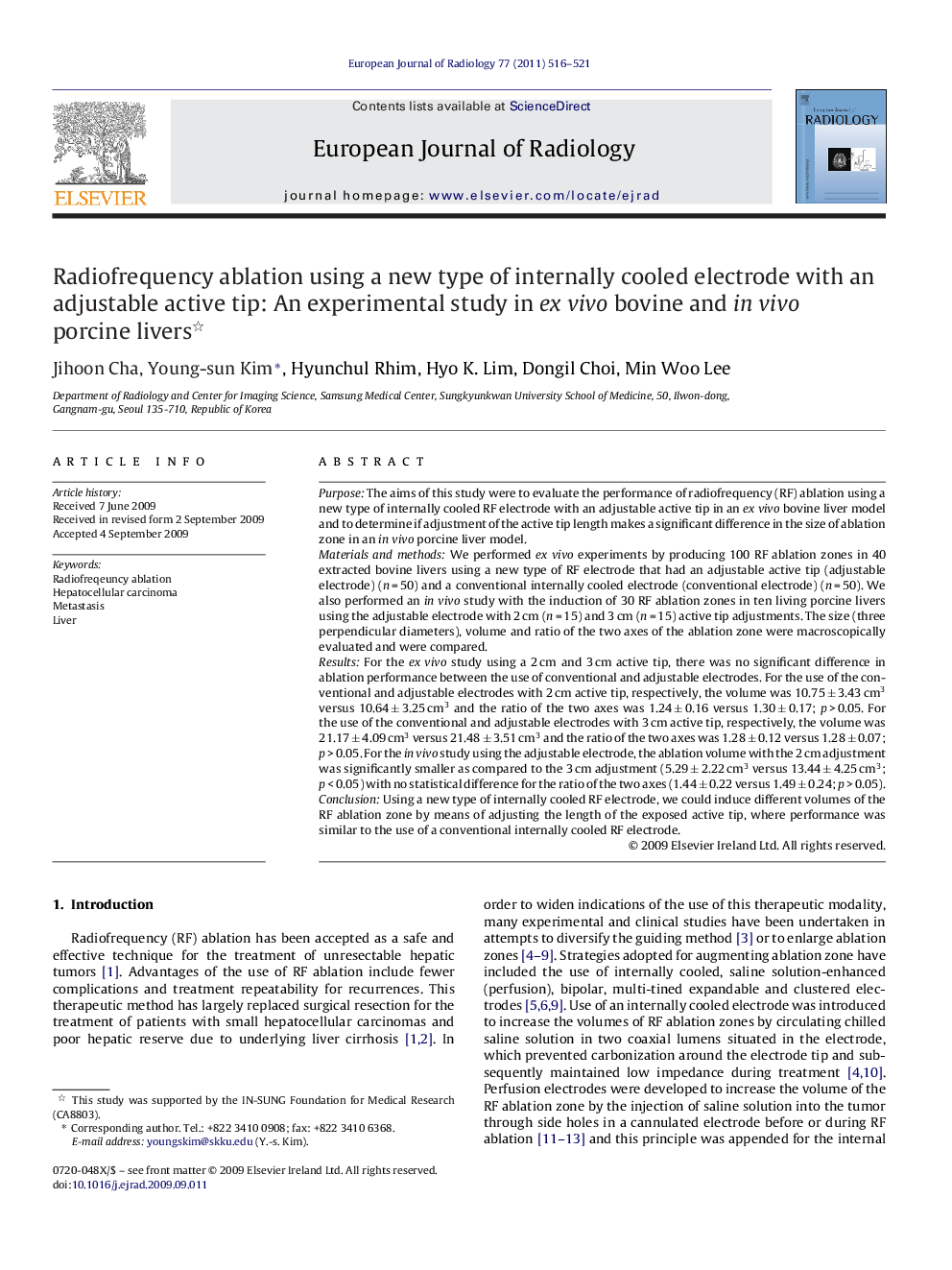| Article ID | Journal | Published Year | Pages | File Type |
|---|---|---|---|---|
| 4226357 | European Journal of Radiology | 2011 | 6 Pages |
PurposeThe aims of this study were to evaluate the performance of radiofrequency (RF) ablation using a new type of internally cooled RF electrode with an adjustable active tip in an ex vivo bovine liver model and to determine if adjustment of the active tip length makes a significant difference in the size of ablation zone in an in vivo porcine liver model.Materials and methodsWe performed ex vivo experiments by producing 100 RF ablation zones in 40 extracted bovine livers using a new type of RF electrode that had an adjustable active tip (adjustable electrode) (n = 50) and a conventional internally cooled electrode (conventional electrode) (n = 50). We also performed an in vivo study with the induction of 30 RF ablation zones in ten living porcine livers using the adjustable electrode with 2 cm (n = 15) and 3 cm (n = 15) active tip adjustments. The size (three perpendicular diameters), volume and ratio of the two axes of the ablation zone were macroscopically evaluated and were compared.ResultsFor the ex vivo study using a 2 cm and 3 cm active tip, there was no significant difference in ablation performance between the use of conventional and adjustable electrodes. For the use of the conventional and adjustable electrodes with 2 cm active tip, respectively, the volume was 10.75 ± 3.43 cm3 versus 10.64 ± 3.25 cm3 and the ratio of the two axes was 1.24 ± 0.16 versus 1.30 ± 0.17; p > 0.05. For the use of the conventional and adjustable electrodes with 3 cm active tip, respectively, the volume was 21.17 ± 4.09 cm3 versus 21.48 ± 3.51 cm3 and the ratio of the two axes was 1.28 ± 0.12 versus 1.28 ± 0.07; p > 0.05. For the in vivo study using the adjustable electrode, the ablation volume with the 2 cm adjustment was significantly smaller as compared to the 3 cm adjustment (5.29 ± 2.22 cm3 versus 13.44 ± 4.25 cm3; p < 0.05) with no statistical difference for the ratio of the two axes (1.44 ± 0.22 versus 1.49 ± 0.24; p > 0.05).ConclusionUsing a new type of internally cooled RF electrode, we could induce different volumes of the RF ablation zone by means of adjusting the length of the exposed active tip, where performance was similar to the use of a conventional internally cooled RF electrode.
